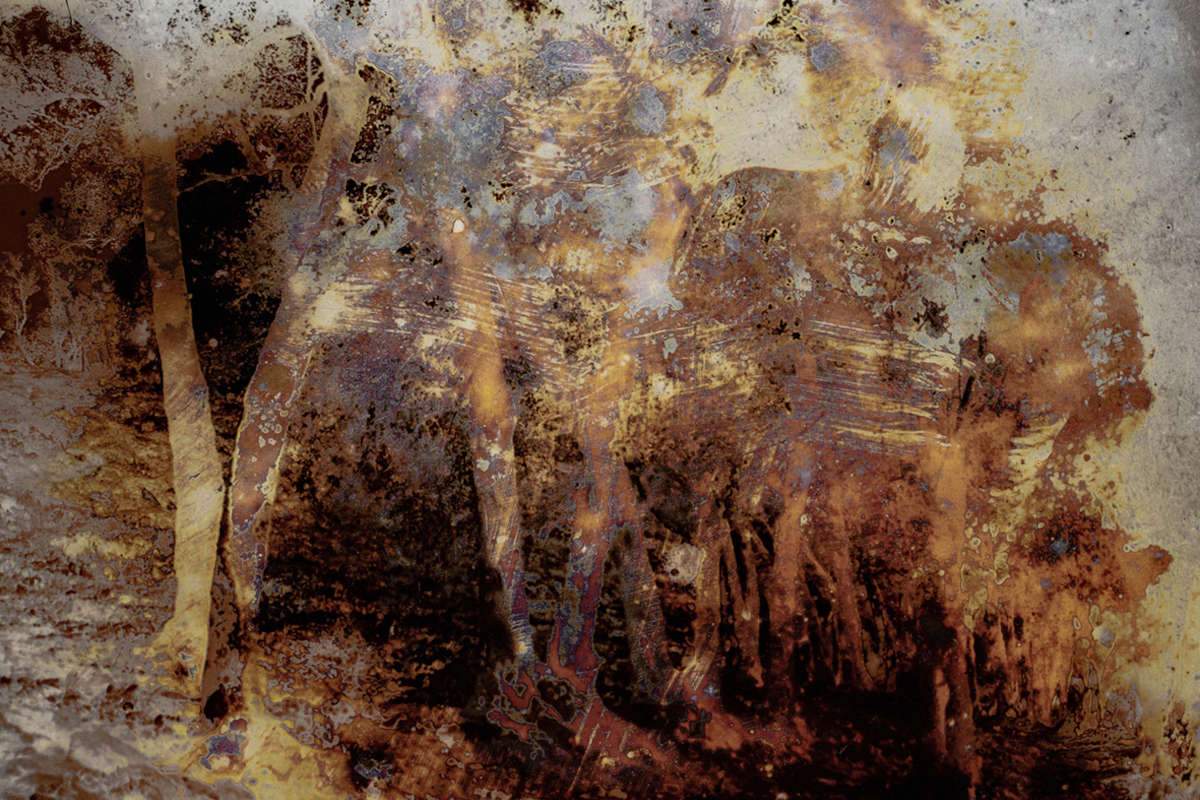From January 24 to March 10, 2024, the Fortuny Museum in Venice is hosting the exhibition Joan Fontcuberta. Culture of Dust, curated by Francesca Fabiani. Visitors will be able to see the twelve light boxes created by the Catalan artist, the result of a dialogue with the historical collections of the ICCD in Rome, an institution founded in the late 19th century as a Photographic Cabinet to document cultural heritage for the purposes of protection and cataloguing. An exhibition that aims to evoke the Fortuny Museum’s deep connection with photography, from the experiments of Mariano Fortuny y Madrazo to its extremely rich archive kept here, then an avant-garde center of photography in the 1970s and 1980s.
Fontcuberta chose to work on some deteriorated photographic plates from the Chigi Fund to create visual and linguistic experiments. A scion of one of the richest and most powerful noble families in history, Prince Francesco Chigi Albani della Rovere (1881-1953), a naturalist and amateur photographer, in the course of his experiments often landed on surprising solutions that dialogue well with Fontcuberta’s provocative and ironic intelligence. A meeting of personalities that, from the archival dust evoked by the title that refers to Marcel Duchamp and Man Ray’s famous 1920 work Élevage de poussière, produced new works from a contemporary perspective.
Through a Surrealist-like process of taking/appropriating already given elements (in this case a fragment of the plate), Fontcuberta has accomplished his creative act, returning images that are almost abstract and yet real; implausible landscapes, absolutely unmanipulated, that appear in the light box display. While the materials on which the artist has worked lose memory, they also acquire new physiognomy through the many marks that the passage of time has left there: scratches, gaps, and sometimes bacteria and fungi that have proliferated thanks to the chemically welcoming environment of the silver salts gelatin emulsion. New landscapes that add to the original subject of the photograph, visible against the light.
“This work analyzes the material agony of photography,” the artist explained. “Photography is a memory device linked to matter. Its material deterioration generates a paradoxically ’amnesic’ photograph, with no more memory.”
The exhibition is promoted by theIstituto Centrale per il Catalogo e la Documentazione inRome in collaboration with Fondazione Musei Civici di Venezia.
The project is a winner of PAC2021 - Plan for Contemporary Art promoted by the General Directorate for Contemporary Creativity of the Ministry of Culture. The works in the exhibition have become part of the contemporary photography collections of the ICCD and are presented in the eponymous artist book Joan Fontcuberta. Culture of Dust, published by Danilo Montanari Editore with texts by Francesca Fabiani, David Campany and Joan Fontcuberta and graphics by TomoTomo.
Hours: Daily from 10 a.m. to 6 p.m. Closed Tuesdays.
Image: Joan Fontcuberta, Culture of Dust - Trauma #1838 (2022; light box, INK JET print on Backlight film mounted on 3mm plexiglass in black wooden box, 100x150 cm) © ICCD Rome
 |
| Catalan artist Joan Fontcuberta's experiments with photographic plates at the Fortuny Museum |
Warning: the translation into English of the original Italian article was created using automatic tools. We undertake to review all articles, but we do not guarantee the total absence of inaccuracies in the translation due to the program. You can find the original by clicking on the ITA button. If you find any mistake,please contact us.